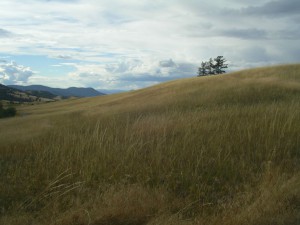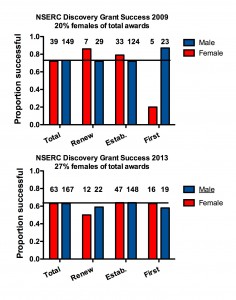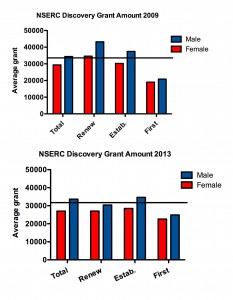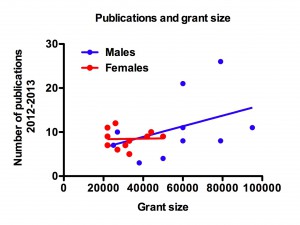Judy Myers, Charles Krebs, Gergana Daskalova and Isla Myers-Smith
The rising concern about conservation issues is echoed in recent months by newspaper reports of collapses in insect populations world-wide: the “insect Armageddon”. As part of our general concern that the-devil-is-in-the-details, we want to discuss these reports within the general question of how we decide if this simple statement is correct or not, and what methods are needed to establish declining population trends.
We require four procedures to decide if a population or a series of populations are declining:
(1) Reliable census methods and appropriate statistical analyses must be used. This is not a trivial exercise. Results can be biased by the chance occurrence of particularly high numbers at the beginning of the data trend as in Seibold et al. (2019), the failure to correct for temporal pseudoreplication in data sets as pointed out by Daskalova et al. (2021) or by searching the literature only for studies of insect decline and then claiming to show widespread population declines as in Sánchez-Bayo et al. (2019). It is important to avoid biasing data toward a conclusion that declines are occurring. Increasing trends and examples showing no trend must be acknowledged and published to allow a true assessment.
(2) The taxonomic group of concern must be delineated since what applies to butterflies may or may not apply to carabid beetles. It can be difficult and time consuming to sort through samples to identify taxonomic groups. For this reason, the biomass of trap collections has been used as a surrogate for insect numbers in some studies (Hallman et al. 2019). This tells us nothing about population trends or diversity of different types of insects. Population data are required, and the biology of the focus group identified when considering causal mechanisms for population trends. For example, aquatic and terrestrial species are likely to respond to different environmental conditions and these must be separated (Van Klink et al., 2020).
(3) The scale of the study must be carefully outlined, whether it is 1 ha of grassland, a region, a country, or a continent. Lumping together results from studies done at different scales makes interpretation impossible. Accounting for scale in analyses is challenging, but detected trends in metrics such as species richness can differ markedly across scales (Vellend et al. 2017; Chase et al. 2019).
(4) The duration of the study must be related to the generation time of the insect group and population dynamics of those taxa. Many insects have a single generation a year and others multiple generations. Shorter time series are more variable (Daskalova et al. 2021), time trends in many insect populations are often more saw shaped than linear (Macgregor et al. 2019), and some insect species experience outbreaks or population cycles (Myers and Cory 2013).
These four requirements are not new, and many authors have discussed the details of these issues and how they play out in specific insect populations (Didham et al. 2020; Wagner 2020). A fifth requirement needs to be added when multiple studies are included in meta-analyses:
(5) All data inclusion must be scrutinized to determine if the four above requirements have been met before they are included in the meta-analysis.
Census methods for insect populations were presented long ago by Southwood (1966) in a classic book, updated in Southwood and Henderson (2000) and now reviewed recently in Montgomery et al. (2021). Montgomery et al. (2021) noted that even at this late date there is a general lack of standardization in insect monitoring methods, and that this standardization is essential if we are to track insect population or community changes. Statistical methods for time series data must be rigorous as pointed out by Daskalova et al. (2021). The general message is that there is no one insect monitoring method that can apply to all species, and the scale of the study, along with the sampling effort needed for reliable inferences on population trends, must be decided well in advance of starting a monitoring study.
Newspaper articles dramatize the collapse of insect populations while the reality shown by detailed studies is much more nuanced. Much of the decline in insects could be traced to climate change, agricultural intensification, forestry, human population growth, urbanization and other factors (Wagner 2021). Consequently, it is important to state what the baseline for any evaluation is. The pure ecologist may wish to know how much insect populations have changed in areas where only one factor like climate change has operated. The agricultural insect ecologist may wish to know overall changes in the presence of all human and natural changes in the agricultural landscapes in which insects live (Laussmann et al. 2021). To find out the actual mechanisms behind the observed declines, a clear experimental protocol is necessary. As useful as monitoring is by itself, it can only provide weak evidence of mechanisms responsible for insect declines.
The restoration of individual species that are declining is more difficult than we might like. Warren et al. (2021) provide details of management changes that attempt to restore populations of the endangered British butterfly Hamearis lucina by landscape level habitat improvements. Funds for restoration will not be available at the scale needed for tropical and subtropical habitats losing insect diversity under stress from agricultural intensification (Raven and Wagner 2021).
The bottom line is that there are enough data now to be concerned about insect declines, but we must be careful not to cry that the “sky is falling” (Saunders et al. 2020). As in many issues with changes in populations and communities, census methods and experimental designs must be sharpened and standardized. Our take-home message is that any tests of insect population, abundance or biodiversity trends require rigorous methods of analysis before publication, or phoning the local newspaper.
Daskalova, G.N., A.B. Phillimore, and I.H. Myers‐Smith. 2021. Accounting for year effects and sampling error in temporal analyses of invertebrate population and biodiversity change: a comment on Seibold et al. 2019. Insect Conservation and Diversity 14:149-154. doi: 10.1111/icad.12468.
Didham, R.K., Basset, Y., Collins, C.M., Leather, S.R., et al. (2020). Interpreting insect declines: seven challenges and a way forward. Insect Conservation and Diversity 13, 103-114. doi: 10.1111/icad.12408.
Chase, J.M., McGill, B.J., Thompson, P.L., Antão, L.H., Bates, A.E., et al. 2019. Species richness change across spatial scales. Oikos 128:1079-1091. doi: 10.1111/oik.05968
Hallmann, C.A., et al. 2017. More than 75 percent decline over 27 years in total flying insect biomass in protected areas. PLoS ONE 12, e0185809. doi: 10.1371/journal.pone.0185809
Laussmann, T., Dahl, A., Radtke, A., 2021. Lost and found: 160 years of Lepidoptera observations in Wuppertal (Germany). Journal of Insect Conservation (in press). doi: 10.1007/s10841-021-00296-w
Macgregor, C.J., J. H. Williams, J.R. Bell, and C.D. Thomas. 2019. Moth biomass increases and decreases over 50 years in Britain. Nature Ecology & Evolution 3:1645-1649. doi: 10.1038/s41559-019-1028-6
Montgomery, G.A., M.W. Belitz, R.P. Guralnick, and M.W. Tingley. 2021. Standards and best practices for monitoring and benchmarking insects. Frontiers in Ecology and Evolution 8: 579193. doi: 10.3389/fevo.2020.579193.
Myers, J.H., Cory, J.S., 2013. Population cycles in forest Lepidoptera revisited. Annual Review of Ecology, Evolution, and Systematics 44, 565–592. https://doi.org/10.1146/annurev-ecolsys-110512-135858
Raven, P. H., and D. L. Wagner. 2021. Agricultural intensification and climate change are rapidly decreasing insect biodiversity. Proceedings of the National Academy of Sciences 118 (2): e2002548117. doi: 10.1073/pnas.2002548117.
Sánchez-Bayo, F., and K. A. Wyckhuys. 2019. Worldwide decline of the entomofauna: A review of its drivers. Biological Conservation 232:8-27. doi: 10.1016/j.biocon.2019.01.020
Saunders, M.E., Janes, J.K. and O’Hanlon, J.C., 2020. Moving on from the insect apocalypse narrative: Engaging with evidence-based insect conservation. BioScience, 70(1):80-89. doi: 10.1093/biosci/biz143
Seibold, S., M. M. Gossner, N. K. Simons, N. Blüthgen, et. al. 2019. Arthropod decline in grasslands and forests is associated with landscape-level drivers. Nature 574:671-674. doi: 10.1038/s41586-019-1684-3.
Southwood, T.R.E. (1966) ‘Ecological Methods.’ (Methuen: London.)
Southwood, T.R.E. and Henderson, P.A. (2000) ‘Ecological Methods.’ (Blackwell Science: Oxford.) 575 pp. ISBN: 0632054778
van Klink, R., Bowler, D.E., Gongalsky, K.B., Swengel, A.B., et al. (2020). Meta-analysis reveals declines in terrestrial but increases in freshwater insect abundances. Science 368, 417-420. doi: 10.1126/science.aax9931.
Vellend, M., Baeten, L., Becker-Scarpitta, A., Boucher-Lalonde, V., McCune, J.L., Messier, J., Myers-Smith, I.H. and Sax, D.F., 2017. Plant biodiversity change across scales during the Anthropocene. Annual Review of Plant Biology 68:563-586. doi: 10.1146/annurev-arplant-042916-040949 .
Wagner, D. L. 2020. Insect declines in the Anthropocene. Annual Review of Entomology 65:457-480. doi: 10.1146/annurev-ento-011019-025151.
Wagner, D.L., Grames, E.M., Forister, M.L., Berenbaum, M.R., and Stopak, D. (2021). Insect decline in the Anthropocene: Death by a thousand cuts. Proceedings of the National Academy of Sciences 118, e2023989118. doi: 10.1073/pnas.2023989118.
Warren, M.S., et al. (2021). The decline of butterflies in Europe: Problems, significance, and possible solutions. Proceedings of the National Academy of Sciences 118 (2), e2002551117. doi: 10.1073/pnas.2002551117.



